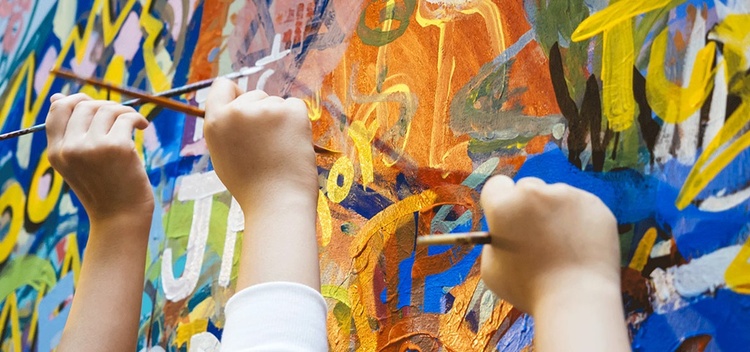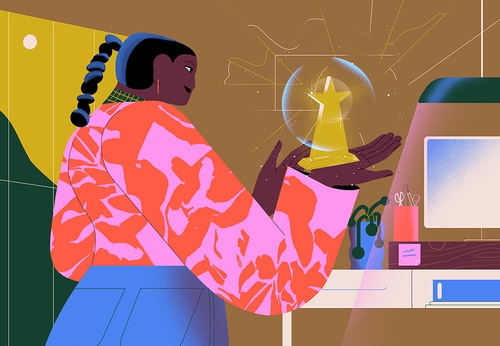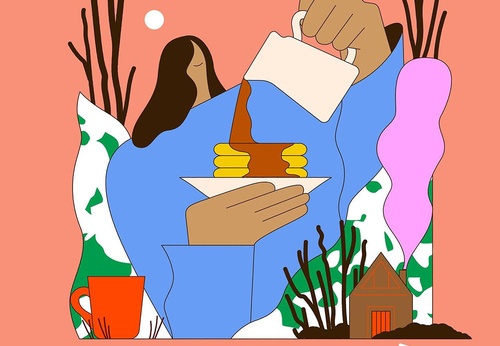
WHERE ARE THE ARTISTS OF TOMORROW?
Culture benefits physical and mental health, in addition to contributing to the economic development and prosperity of countries. If we want a world in which we continue to enrich views, artistic education must be present in educational curricula.
Imagine a world where no books are written. In which no musical pieces are created or new color combinations are made on a canvas. A world without art would be disastrous: culture is a social good and a way of life that we must take care of. Behind every painting, film or play there is a group of people who work so that we can enjoy, question, empathize and imagine other worlds.
Culture contributes to the economic development and wealth of countries and, in the case of Latin America, contributes more than 2% of the GDP and 1.7% of jobs in the region, according to a study by the Organization of Ibero-American States for Education, Science and Culture (OEI) and the UN Economic Commission for Latin America and the Caribbean (ECLAC).
It is a gear that moves because there are those who create and those who are willing to see, listen and enjoy. But what can we do to continue generating culture? How to encourage artistic vocations so that a world without culture does not exist?
During the II Ibero-American Seminar on Early Childhood, Reading, Artistic Languages and Reading Families in Early Childhood, held in April 2022 by the OEI and CERLALC, the family was mentioned as the first germ of the reading and writing habit. The home is where the initial development of boys and girls occurs. And also the space where the artist originates.
However, the educational center also has a decisive role in encouraging creative capacity. The arts allow children to develop skills such as creativity and innovation, and that is why Artistic Education Week is celebrated from May 23 to 29 of this year. Since 2012, UNESCO has invited with this date to reflect on the importance of educating in the arts, a discipline that for its general director, Audrey Azouley, "is not only a means to confront crisis situations, but also contributes to socio-emotional well-being and the improvement of learning outcomes.
After school, libraries, theaters, museums and cultural centers are the next links in this chain to keep culture alive and generate artistic hobbies during childhood. Aware of the role of the school in culture and the arts, we work in several directions so that artistic education has the role it deserves in teaching.
One of the latest initiatives has been the artistic experiences platform, a web space that compiles good practices and activities carried out by cultural managers, institutions and educators so that they can be replicated and serve as an example for other educators. For its part, the School of Culture, of the recently launched Ibero-American Institute for training and learning for the cooperation of the OEI, offers a virtual program of artistic education of the present, a training proposal that aims to debate current Ibero-American artistic education and generate a reflection process to contribute to the development of an artistic education connected to the now.
We live in a world full of images, videos, sounds and, ultimately, sensory stimuli that assault us. Being a girl or boy in a context like the current one is having access to a large amount of information that is attractive but that one does not know how to interpret. Artistic education is key to knowing how to look and educate in visual culture.
In Spain, institutions such as the Reina Sofía Museum or the Cerralbo Museum include work on visual culture with young people and teachers in their programs. Recently, the Reina Sofía has worked with teachers on workshops on contemporary creation, based on the museum's documentary collections, and the Cerralbo Museum, on the other hand, has given Cerralbo on memes, a workshop on sexuality, affectivity and gender based on museum works, memes and current music.
If we want a world with art and culture in which to continue enriching views and feeding curiosity and the ability to imagine, artistic education must be present in educational curricula. Educating the artists and audiences of tomorrow is a task that begins in the family, but is developed in the rest of the stages of life and in which educators are essential. Training educators in artistic languages will help generate critical perspectives in children to understand the visual society.

- July 12, 2025
Gallery of Illustration by Xoana Herrera from Argentina

- July 12, 2025
Gallery of Illustration by Justyna Stasik from Poland

- July 12, 2025
Gallery of Typographic Posters by Li Xu – China

- July 11, 2025
Works by Six Latin American Artists

- July 11, 2025
IdN Magazine Volume 21, No.4 : Pattern Special

- July 11, 2025
Gallery of Posters by Daniel Warner from USA

- July 11, 2025
YEMEN


- July 10, 2025
IdN Magazine Volume 20, No. 1: Environmental Graphics

- July 10, 2025
The Evolution of Graphic Design from Ty…

- July 10, 2025
How Digital Artists Collaborate with Ar…

- July 09, 2025
The Value of Art in Education

- July 09, 2025
Art as a Reflection of Society

- July 08, 2025
The history of Bolivian art

- July 08, 2025
Protecting Art in the Age of Artificial…

- July 04, 2025
Graphic Design and Creating Iconic Bran…

- July 04, 2025
Photography as a Tool for Telling Histo…

- July 03, 2025
Painting and abstract art: differences …

- July 02, 2025
The Best Software for Digital Art and G…

- July 01, 2025
How Digital Artists Collaborate with Ar…

- July 01, 2025
Reflections of Digital Art in Different…

- June 30, 2025
Crítica de Obras Artísticas Criadas por…

- June 30, 2025
What are Plastic Arts?

- June 30, 2025
Images Against Silence: Artists Who Cha…

- June 29, 2025
History of Art Photography in the 20th …

- June 28, 2025
The 11 types of art and their meanings

- June 28, 2025
Contemporary Art is postmodern art

- June 26, 2025
Graphic Design, Art, and Technology: Wh…

- June 25, 2025
Graphic Design and Modern Content Creat…

- August 29, 2023
The history of Bolivian art

- February 19, 2024
Analysis and meaning of Van Gogh's Star…

- January 28, 2024
Culture and Art in Argentina

- September 25, 2023
What is the importance of art in human …

- September 23, 2023
What is paint?

- August 10, 2023
14 questions and answers about the art …

- August 30, 2023
First artistic manifestations

- August 23, 2023
The 11 types of art and their meanings

- January 12, 2024
10 most beautiful statues and sculpture…

- September 23, 2023
Painting characteristics

- September 23, 2023
History of painting

- August 16, 2023
The 15 greatest painters in art history

- April 06, 2024
History of visual arts in Ecuador

- March 26, 2024
The importance of technology in art1

- January 31, 2024
Examples of Street Art – Urban Art

- January 20, 2024
What is the relationship between art an…

- April 07, 2024
Graffiti in Latin American culture

- March 26, 2024
Cultural identity and its impact on art…

- October 21, 2023
Contemporary art after the Second World…

- August 25, 2024
A Comprehensive Analysis of the Cartoon…

- February 19, 2024
Analysis and meaning of Van Gogh's Star…

- August 13, 2023
9 Latino painters and their great contr…

- August 10, 2023
14 questions and answers about the art …

- August 29, 2023
The history of Bolivian art

- January 28, 2024
Culture and Art in Argentina

- August 23, 2023
The 11 types of art and their meanings

- November 06, 2023
5 Latin American artists and their works

- August 27, 2023
15 main works of Van Gogh

- September 23, 2023
Painting characteristics

- September 23, 2023
What is paint?

- September 25, 2023
What is the importance of art in human …

- December 18, 2023
10 iconic works by Oscar Niemeyer, geni…

- August 30, 2023
First artistic manifestations

- January 20, 2024
What is the relationship between art an…

- March 26, 2024
Cultural identity and its impact on art…

- January 12, 2024
10 most beautiful statues and sculpture…

- October 30, 2023
Characteristics of Contemporary Art

- August 22, 2023
What are Plastic Arts?

- April 16, 2024
The most important painters of Latin Am…

- August 24, 2023


